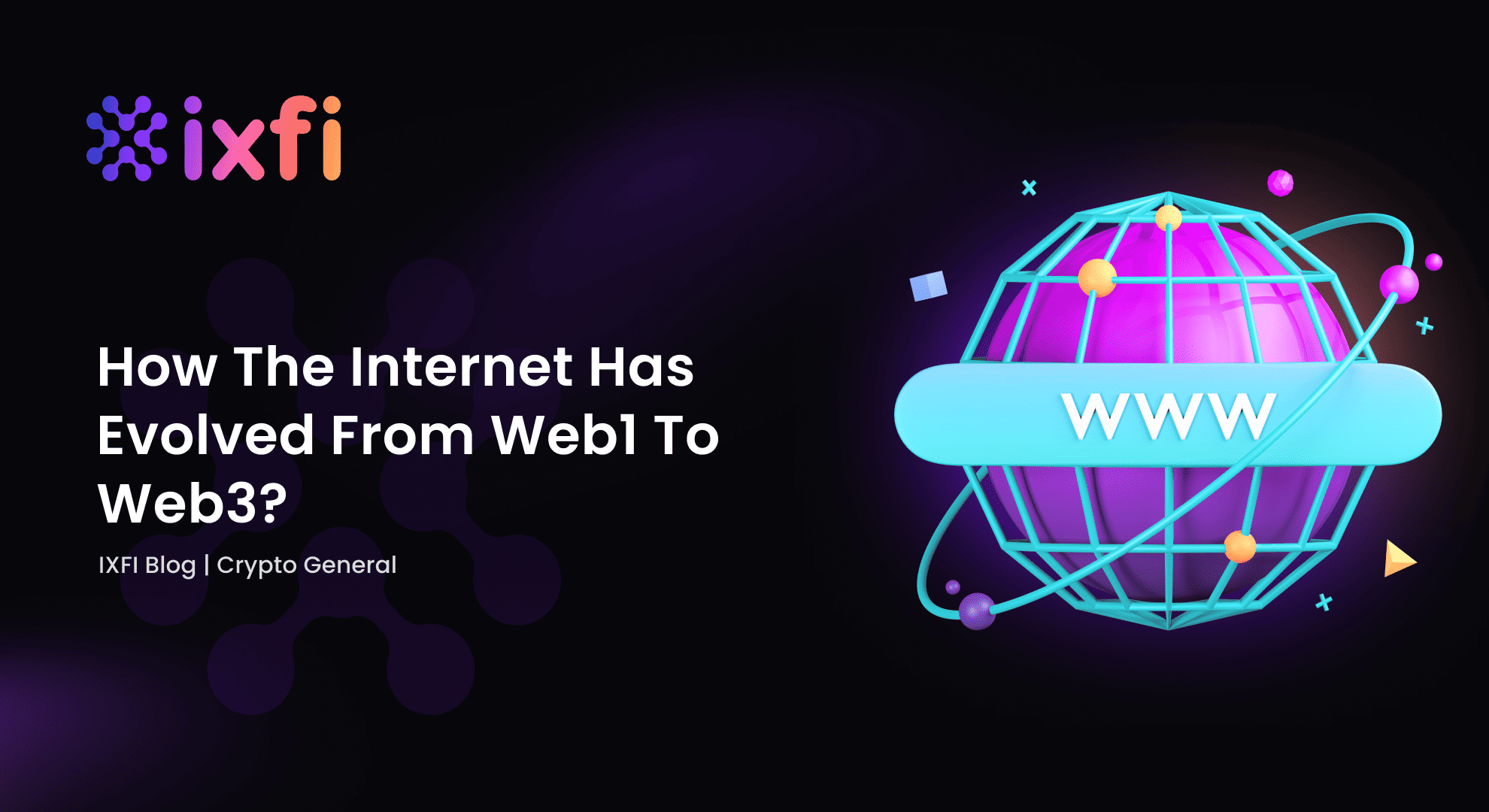From Web1 to Web3: The development of Web3 technology is first and foremost aimed at ensuring the confidentiality of the data of its users; thus, users will be able to perform their transactions on a decentralized platform efficiently. In addition to all this, the data of users whose personal information is also archived will not be shared with third parties. So the personalization shifts towards decentralization, actually providing a more personalized habitat but remaining unexposed to the public view at the same time.
Web1
With swift developments in information tech and applications, things are getting memory-holed fast. We will have a quick peek at Web1 first to understand the fundamental vision of the future we mentioned above.
Web1 was the beginning of what we call the World Wide Web (WWW), which is, used to refer to websites created in the early days of Network technology around the World. The main purpose of websites classified as Web1 was solely to provide information to the user. In other words, users can access this site but only consume the information there.
- The interaction was limited to the user’s navigation only through available links
- Users had no rights or possibility to contribute to the content on the site
- Users had a passive role of a consumer who could read the information presented as a whole using a deductive approach
Web2
Web2 was first coined during a brainstorming session at an international conference. The most definitive difference between Web2 and Web3 would be user interaction. Users would not just passively consume but, on the contrary, act as active producers who have a say, contribute, develop and share the content.
The purpose of Web2 applications was to allow users to take advantage of the possibilities of cooperation and social interaction on the Internet. Some call Web2 a “Social Revolution”. Web2 tools are also called “social software” or “social media.” The key features that define Web2 can be listed:
- Users are both consumers and creators, having the option not only to read, play, watch and listen to the previously prepared content but also to contribute to it by creating, reviewing, and sharing
- Users can classify content using tags. In this way, the content is divided into categories with the joint participation of users
The Schism – Web2 vs. Web3
Contrary to Web2’s central control mechanism, Web3 basically refers to the decentralized and peer-to-peer use of the internet, which is supported by blockchain technology. Thanks to this, the internet, including the storage of user data, can now be included in a decentralized blockchain system. Everyone can establish connections and transactions without having to abide by third-party authorities.
The most fundamental difference between Web2 and Web 3 is this concept of decentralization. As we can see from the Web2 that we are currently using, we can enjoy content “through” some browsers and sites. But these browsers and websites are owned by private companies, and even though we can create content, it’s these companies that benefit most from our work online. The nature of Web 3 would target this unfair relationship and eliminate the control these companies have with a direct connection aim. So the possibility of more information-based and individually owned content is among the biggest differences between Web2 and Web 3.
- Every factor managed on Web2 will also be managed by blockchain technology in a Web 3 system
- Applications in the Web2 system are to be replaced by decentralized standalone applications
- The websites we use today will also be replaced by VR-supported Metaverse projects within the Web3 system
The Future Looks Promising
The Web3 system is already used in the form of crypto-trading, NFT creation, and crypto games, etc. In the future, every existing application or social media platform will be connected to the user’s cryptocurrency wallet. Therefore, users will be rewarded as much for their participation in the development of this system, becoming their own masters.
Ready to be part of this amazing future? Join IXFI and help us on the mission to bring decentralization to the way we do things. Become empowered with IXFI.
Disclaimer: The content of this article is not investment advice and does not constitute an offer or solicitation to offer or recommendation of any investment product. It is for general purposes only and does not take into account your individual needs, investment objectives, and specific financial and fiscal circumstances.
Although the material contained in this article was prepared based on information from public and private sources that IXFI believes to be reliable, no representation, warranty, or undertaking, stated or implied, is given as to the accuracy of the information contained herein, and IXFI expressly disclaims any liability for the accuracy and completeness of the information contained in this article.
Investment involves risk; any ideas or strategies discussed herein should, therefore, not be undertaken by any individual without prior consultation with a financial professional for the purpose of assessing whether the ideas or strategies that are discussed are suitable to you based on your own personal financial and fiscal objectives, needs, and risk tolerance. IXFI expressly disclaims any liability or loss incurred by any person who acts on the information, ideas, or strategies discussed herein.


